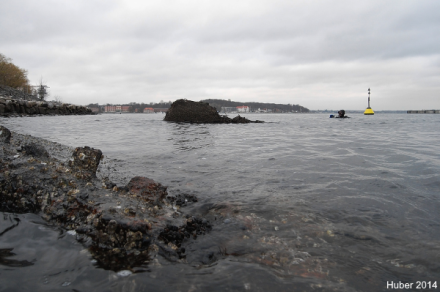History
A Ship made out of concrete
In the Bay of Kiel, the fragmentary remains of a concrete ship (a ship with a hull made out of concrete) were found. The remains are situated in close proximity to the naval base of Kiel and were initially mistaken for building debris associated to a slipway.
The remains of the concrete ship have been investigated by the Federal Maritime and Hydrographic Agency of Germany (Bundesamt für Seeschifffahrt und Hydrographie, BSH), recreational wreck divers and divers of the University of Kiel.
Description
Although the vessel has not been positively identified yet, it has been tentatively associated with a coastal barge of the 'Transportflotte Speer' (literally: transport fleet Speer, named after Albert Speer, the minister of armaments and war production), which was towed into the harbour with war refugees on board towards the end of World War II. It was probably built in Rügenwalde, where concrete ships were secretly built in secrecy from 1943 onward. Common materials used in shipbuilding, like steel, became a scarcity in Nazi Germany because of allied blockades, which gave rise to ship's hulls being built out of concrete.
Status
Not much of the visible remains points into the direction of a ship. Indeed, the concrete debris and reinforcement rods visible above the water-level are more reminiscient of a building. And with the bow and stern missing, the structure does not even resemble the outline of a ship.

References
- Baehr, S., Wilhelmy, J. (2006).
Tauchreiseführer Ostsee. Von Als bis Lübecker Bucht.
Stuttgart. - Huber, F. (2014).
Unterwasserarchäologische, nicht-invasive Prospektions- und Dokumentationsverfahren in schwierigen maritimen und limnischen Gewässern (=Dissertation).
Christian-Albrechts-Universität zu Kiel.